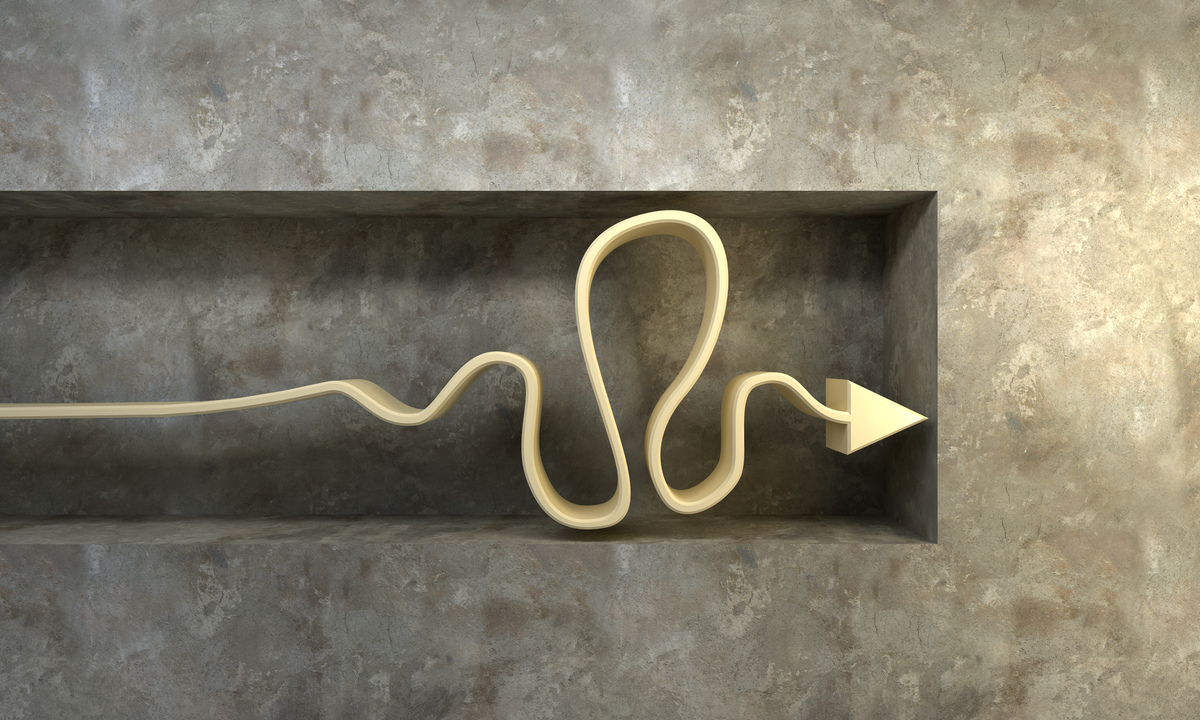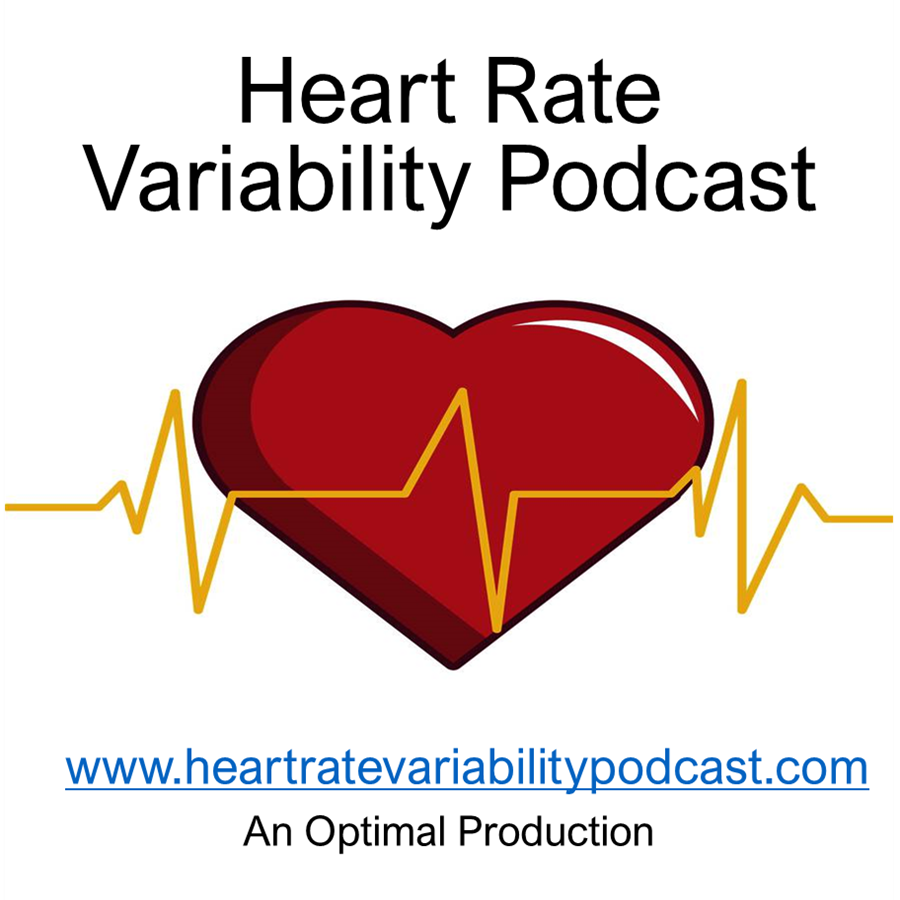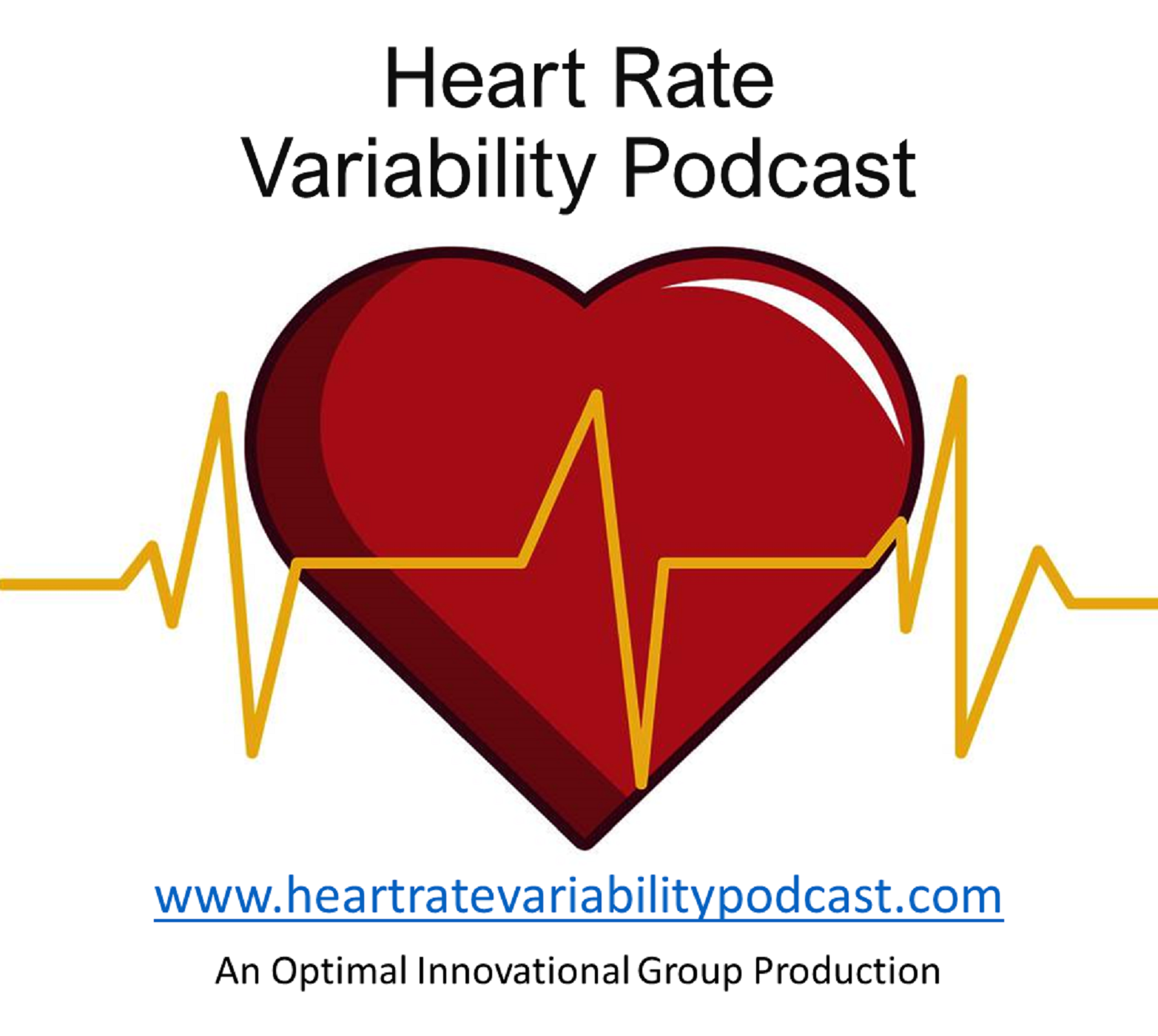Episode Transcript
[00:00:00] Welcome back to the Heart Rate Variability Podcast. I'm Matt Bennett, co founder of Optimal hrv, and this is our weekly research and news digest. Today's episode is based on three new publications from the week of September 5th through September 11th, 2025. These studies and articles highlight advances in HRV measurement, the impact of physical fatigue on hrv, and what we know about the accuracy of consumer wearables. To give you the fullest picture, I'll not only summarize the findings, but also expand on their background, context and implications.
[00:00:35] By the end of this long form episode, we'll have walked through around 5,000 words of analysis, examples and practical insights. Let's begin with the first paper, published September 8, 2025 in Sensors by Chuy and colleagues. The title is Non Contact Heart Rate Variability Monitoring with FMCW Radar via a novel signal processing Algorithm Heart rate variability is usually measured with chest straps, electrodes or optical sensors worn on the skin. These methods work well, but they have obvious drawbacks. Straps and electrodes can be uncomfortable, especially if used for long periods. Optical sensors can be inaccurate if the subject moves, and in settings such as elder care, neonatal units or sleep labs. And asking people to wear equipment for hours or days is not always practical. That's why non contact HRV has been a dream for many researchers. Imagine capturing high quality HRV data without touching the patient.
[00:01:36] Shihwe and colleagues took a step in this direction using millimeter wave radar or M wave FMCW radar, which is already used in fields like automotive safety and industrial sensing. The team designed A calibration free 3D target positioning system that integrates digital beamforming, moving target indication and clustering through the deebscan algorithm. The goal was to capture the micro motions of the chest caused by heartbeat and breathing. Of course, those signals are tiny and easily buried in noise, so the researchers added a second order spectral sparse separation method, a clever way of teasing apart the subtle cardiac signatures from the stronger respiratory oscillations and environmental noise. When they compared their pipeline to prior approaches, they found it reduced interbeat interval estimation error by more than 50%.
[00:02:29] That is a substantial improvement, enough to argue this isn't just a proof of concept, but a credible advance. Now, what does this mean in practice? First, it opens the door to contactless HRV monitoring in clinical or home environments.
[00:02:45] Imagine a radar sensor mounted in a sleep lab, monitoring a patient continuously without wires or straps. Or think about elder care, where frail individuals might not tolerate wearable sensors. Contactless HRV could provide continuous autonomic data without adding burden for public health researchers, a radar based system could one day allow large scale, low burden HRV monitoring in community settings. Of course, limitations remain. The current study required minimal subject movement that's fine in sleep studies, but less feasible in dynamic contexts like athletic training or daily life. The validation was offline, meaning the algorithms weren't running in real time. There's still a long way to go before we can deploy such systems in clinics or homes, but in terms of trajectory, the progress is undeniable. Contactless HRV is moving from concept to reality before we move on A quick note this episode of the Heart Rate Variability Podcast is sponsored by Optimal hrv. Our app gives clinicians, researchers and individuals the tools to monitor heart rate variability in a scientifically grounded way. Whether you're interested in daily baseline's guided biofeedback or or population level data collection, optimal HRV makes it easier to bring HRV into practice. This brings us to a larger conversation about accessibility and equity. HRV is a powerful biomarker of stress resilience and recovery, but its adoption has been limited by the cost and burden of measurement. If non contact radar systems become reliable, they could make HRV tracking available in new populations, from premature infants in NIC us to older adults in nursing facilities.
[00:04:34] They might also open doors for population level monitoring during epidemics where autonomic shifts could act as early warning signs of illness. In all these cases, the less burden placed on the person, the more feasible it becomes to gather meaningful longitudinal data. Now let's move to our second peer reviewed study. This one was also published in sensors on September 6, 2025 by Jiang and colleagues. The title is Effects of Induced Physical Fatigue on Heart Rate Variability in Healthy Young Adults. The study recruited 20 young adults, nine female and 11 male, average age. About 23 participants walked on a treadmill at 1.25 meters per second while the incline gradually increased until they reached a fatigue threshold.
[00:05:21] HRV metrics were collected at baseline, before fatigue and after fatigue.
[00:05:27] The key finding was that time domain HRV measures, LNTRI and LNTINN in particular dropped significantly after fatigue. Nonlinear metrics like detrended fluctuation analysis, alpha 1 and entropy also decreased. In contrast, normalized frequency domain measures were less sensitive. In plain language, HRV features that capture the complexity and variability of heart rhythms declined after participants were pushed into fatigue, while relative frequency band measures were not as responsive. An interesting secondary finding was that participants with higher baseline parasympathetic activity reflected in higher high frequency power and greater HRV irregularity tended to show better endurance in other words, those whose nervous systems were more flexible at baseline could tolerate more strain before reaching fatigue.
[00:06:20] This aligns with the broader literature suggesting HRV is not only a marker of recovery but also a predictor of resilience. Why does this matter? For trainers, occupational health professionals and researchers, the study provides a clear message. If you're monitoring fatigue, time domain and nonlinear HRV features may be more useful than frequency bands alone.
[00:06:43] Too often we default to LF HF and LF HF ratios because they're standard in textbooks. But this study highlights the importance of complexity measures, which may better capture how the nervous system responds to cumulative load. Think about occupational contexts. Workers in physically demanding jobs could benefit from HRV monitoring that warns of systemic fatigue before injury or errors occur in athletics. Coaches already use HRV to monitor readiness, but this study fine tunes the picture by suggesting which metrics are most sensitive. And in clinical rehab, patients recovering from cardiac or pulmonary conditions may benefit from careful fatigue monitoring with HRV as a non invasive window into their physiological limits. We can also reflect on the practical side. Sample size here was modest, just 20 participants and all were young and healthy. We don't yet know how these findings extend to older adults and clinical populations or women across different phases of the menstrual cycle. Future research will need to test broader groups. Still, this study adds a piece of evidence that hrv, especially in its non linear and time domain forms, is sensitive to fatigue states in real humans doing real exercise.
[00:08:01] Finally, let's turn to our third source this week, a news feature that helps us think about how to communicate and HRV science to the public.
[00:08:10] On September 8, 2025, News Medical published an article by Priyanjana Pramanik, MSc, titled Wearable Health trackers reveal how accurate your smartwatch really is. The piece summarizes a review in MPJ Cardiovascular Health on the accuracy of consumer wearable sensors. Here's the gist Wearables derive HRV either from electrocardiogram signals or or from photoplithysmography, the optical method most smartwatches use.
[00:08:41] The review found strong concordance between pulse rate variability, the wearables estimate, and ECG derived HRV at rest. That's good news, however, accuracy varied by context and by which HRV metric you looked at. Wearables do well at counting steps and tracking heart rate. Their sleep staging, stress scores and blood pressure estimates are more variable for hrv. Rest is where they shine movement and certain advanced metrics can lead to larger errors. This is an important nuance. Too often we hear polarized messages either wearables are junk or wearables will revolutionize medicine. The truth is in between. Wearables provide valuable, accessible data when used under the right conditions. For hrv, that means relying more on resting measurements than on noisy data gathered during workouts.
[00:09:34] It also means being cautious about over interpreting advanced metrics that haven't been validated as rigorously. For clinicians and coaches, the message is clear. Educate your clients and patients on when wearable HRV is most reliable. Use it as a tool for awareness, not as a diagnostic device.
[00:09:53] And for researchers, the review underscores the need to validate consumer devices in diverse populations and contexts.
[00:10:01] Stepping back, let's reflect on how these three sources connect. First, they all speak to the evolving methods of HRV measurement, from radar to treadmill protocols to wristbands. Second, they remind us that context matters. Fatigue states, resting conditions, and movement artifacts all influence hrv. And third, they show the importance of communication. Whether we're talking to athletes, parents, patients, or the general public, we need to frame HRV findings in ways that are accurate and practical.
[00:10:34] Now, since this is our long form episode, let's expand even further. I'd like to spend some time unpacking the broader implications of these studies and giving practical examples you can use in your own work. Consider the radar study again. Suppose you run a sleep lab today. Your patients come in, get hooked up to wires and sensors, and spend the night trying to sleep in a strange environment.
[00:10:57] Not surprisingly, many have trouble sleeping naturally under those conditions.
[00:11:01] Now imagine replacing some of those sensors with a radar unit mounted on the wall. The patient lies in bed without wires while the radar unobtrusively tracks their HRV respiration and movement. You get rich autonomic data without the burden.
[00:11:17] That's a better experience for patients and more ecologically valid data for clinicians. Or or think about elder care. Older adults may find straps uncomfortable or may have skin conditions that make electrodes impractical. A radar sensor in the room could track their autonomic health passively.
[00:11:37] Staff could receive alerts. If HRV patterns suggest acute stress illness or impending collapse, that could save lives. But radar also raises questions. What about privacy?
[00:11:49] Continuous monitoring in private spaces requires strict safeguards. How do we handle false positives or algorithmic biases? And how do we ensure these systems don't widen disparities by being available only in well funded facilities. These are the conversations we need to start now, before the technology becomes mainstream. Turning back to the fatigue study, let's play out some practical applications. Imagine a firefighter training academy. Recruits face intense physical strain and safety is paramount. By integrating HRV monitoring, instructors could identify individuals who are approaching dangerous fatigue thresholds. Instead of waiting for collapse, they could intervene proactively.
[00:12:34] The time domain and nonlinear metrics highlighted by zhang and colleagues lntri ln10dfa alpha 1 entropy could be the early warning indicators in sports. The application is obvious. Coaches already use HRV to tailor training loads, but this study suggests refining the choice of metrics. Instead of focusing solely on LF and HF bands, coaches could track entropy into trended fluctuation analysis to get a clearer picture of fatigue over time. This could prevent overtraining and optimize performance in workplaces. Think about long haul trucking or airline pilots.
[00:13:12] Fatigue is a major risk factor. HRV monitoring could provide a non invasive way to ensure operators are alert and resilient.
[00:13:21] Again, choosing the right metrics matters. Let's also consider the finding that higher baseline parasympathetic tone predicted better endurance. This adds to the growing evidence that HRV is not just reactive, but predictive. If we know someone's baseline vagal activity, we can make informed guesses about their resilience to future stressors, and that has implications for personalized training, tailored rehab, and even hiring decisions in safety critical jobs. Finally, the Wearable Review article reminds us to be careful. Communicators, clients and patients often ask, can I trust the HRV number on my smartwatch? The best answer is nuanced yes. At rest, these devices can provide useful approximations of HRV no during exercise or sleep staging. They are not yet replacements for clinical grade tools. By framing wearables as awareness tools rather than diagnostic instruments, we can help people benefit without over relying on imperfect technology.
[00:14:22] In sum, this week's research and news underscore three innovation in measurement, sensitivity to fatigue, and clarity in communication. HRV continues to be a powerful window into resilience and recovery, and these new studies expand the ways we can use it.
[00:14:38] This episode of the Heart Rate Variability Podcast is brought to you by Optimal hrv. Our app provides clinicians, researchers, and individuals with accessible HRV monitoring and analytics. We're continually integrating the latest science to help you track and build resilience. Thanks for staying with me through this extended episode. Be sure to subscribe so you don't miss future updates. I'm Matt Bennett and I'll see you next time as we continue exploring the science and practice of heart rate variability.


